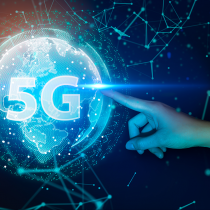
Before we talk about telecommunications infrastructure as such, in the context of the economic-social situation we have lived and dragged for so long, to which is added a pandemic that adds difficulty in visualizing a prosperous and equitable country in offering opportunities and developing people’s talents.
It is hard not to ask first: which country do we really want and want for all its inhabitants?
If we really want to move forward, we have an ethical obligation to try to respond to the above, either to try to change course or eventually confirm that we are happy with our current situation as a commodity-producing country, which does not add much added value to the entire production chain, a value that is generally obtained with machinery and methods that come from abroad and that are not the product of the country’s internal capacities, including human capital that is formed in different institutions of higher education, university and technical-professional.
It is not enough to repeat to us that it is internal capacities that assure us independence, strength and competitiveness, and with this perspective, wealth must be created and opportunities must be created to achieve a better quality in jobs and remuneration. For the latter it is necessary, among other things, that people and the country as a whole, in addition to having a theoretical knowledge of the respective subjects, possess the corresponding know-how, the “know-how” that allows the theory to be put into practice.
However, in order to contextualize and harmonize with the country’s development plans, moving towards 5G telecommunications technology, where, for example, network latency will in many cases be lower or of the same order of magnitude as human reaction times. This will be crucial for an unprecedented change of all kinds of “teleactivity”, such as instrumentation and monitoring of dynamic processes, machinery or other devices in geographically remote work and any other remote activity, such as monitoring loads that require telemetry and real-time traceability of parameters that characterize them, as well as monitoring and controlling the process of transporting them.
The communication possibilities associated with 4G+ and 5G, coupled with the advancement in the implementation of robotics and artificial intelligence, should produce and/or deepen structural changes in the production and distribution methods of organizations. Of course, as long as we are prepared and plan for the future in months – the very long term in these matters does not exist.
Specifically, with respect to telecommunications infrastructure, geographically distributed coverage is essential for profit, in real and operational terms. It is clear that the current distribution is a major lack of the country and in particular of several regions. This demonstrates an important correlation between the geographical distribution of poverty, lack of opportunity and connectivity.
Today there is a certain opportunity to take a leap. There is the need, such as having an open wound, and there are the technical and financial capabilities for a solution that combines terrestrial networks in fiber optics, microwave links and satellite links with spatial megaredes like SpaceX or another.
In reality, it was apparently not thought that at this time our vulnerabilities and lack of development opportunities and many other features that have a direct impact on people’s well-being would be so starkly highlighted, but at the same time, this crude reality has accelerated programmes and projects, especially those of fiber optic connectivity. This is how in a couple of years we should have fiber optic trunks throughout the country and we have to worry especially that the vast majority of localities will be interconnected, connecting them digitally with robust infrastructure and with the right capacity, thinking at least for the next 20 years, in accordance with the Digital Agenda 2020.
To this we must add all the projects of what is technically called “capillary”, which is the connection from the entrance trunk terminals to the public, educational and health houses and buildings of the towns addressed, in order to complete the information road with a vigorous, effective and point-to-point connection.
We still have enough time, because aperiod with “automated” systems, which will, however, require highly trained technical personnel for the maintenance and operation of the equipment. We don’t have an industry 4.0, but obviously we have to move in that direction, not because it’s necessarily the best, but because it’s very certainly a huge opportunity to achieve greater well-being for all people.
The content poured into this opinion column is the sole responsibility of its author, and does not necessarily reflect the editorial line or position of El Mostrador.





